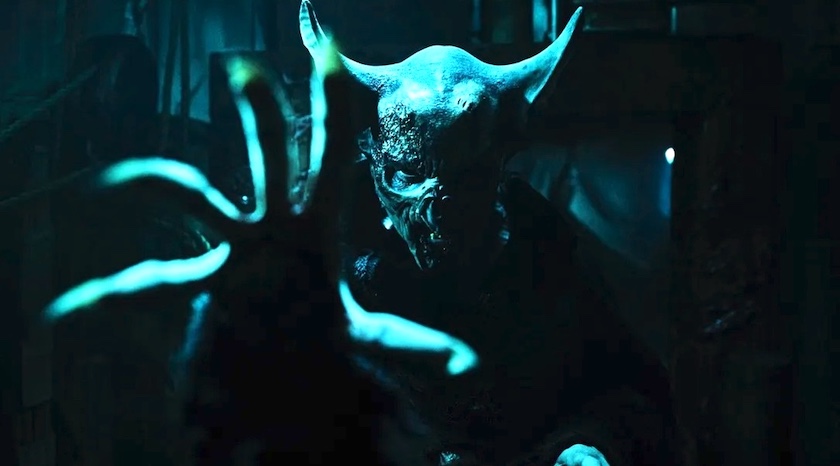
Director Justin Dix is a local go-to guy for special effects and makeup design. Based out of his Wicked of Oz studio in the Melbourne suburb of Williamstown, his body of work includes films like The Babadook, Star Wars Episodes II & III, The Loved Ones, and Red Hill, amongst others. He also directs and made his feature length debut with the claustrophobic sci-fi horror Crawlspace (2012).
Having cut his teeth with that previous low-budget chiller, Dix returns with his sophomore film Blood Vessel, a gothic lore set on the high seas, featuring an impressive ensemble cast and phenomenal production design.
The year is 1945, and a life raft floats adrift in the Atlantic Ocean. Its occupants are the survivors of a torpedoed hospital ship and they are entirely out of rations. Unable to survive another day at sea, fortune smiles upon them when they’re able to climb on board of a Nazi minesweeper ship that charges towards them. Abandoned and cruising aimlessly through the eerie fog-swept seas, the group of multi-national survivors soon discover that the ship’s cargo is nocturnal, thirsty for blood, and the reason why there’s no crew on board.
Much like Crawlspace, Blood Vessel is deeply rooted in a specific genre and adheres to the conventions vehemently. It makes no apologies for recreating a classic brand of horror and wears its influences on its sleeves. Taking unabashed cues from the world of Bram Stoker, Dix has conjured a nostalgic atmosphere that presents itself as an ode to Dracula and specifically tips its hat to Nosferatu.
If you haven’t cottoned on by this point, the monsters of Blood Vessel are vampires, and they have been deliciously designed to recall the earlier cinematic incarnations of Max Schreck and numerous Hammer Horror creations. And by placing his human characters on a German war ship, Dix cleverly capitalises on the ever-popular Nazi-horror sub genre without actually featuring Nazis, giving himself a fantastic setting that he exploits to amazing effect.
Shot mostly inside the HMAS Castlemaine, docked at Williamstown, the film’s production design is as equally authentic as it is fantastical. The confined spaces are lit with blues and reds, lending to a similar claustrophobic environment as previously created in Crawlspace, and with the creatures of the night protected from daylight, the scene is set for a low-budget horror movie with a larger-than-life atmosphere.
Amongst the impressive cast are Nathan Phillips (These Final Hours), Robert Taylor (Longmire), Alyssa Sutherland (The Mist), Christopher Kirby (Upgrade) and Alex Cooke (Sunshine), who all offer well-measured performances while lending the film an international appeal. Phillips leads the film effortlessly and continues to prove himself as stalwart of the genre.
The one detriment to Blood Vessel, however, is its pacing. Suffering the same fate as Crawlspace (albeit less severely), the story meanders considerably throughout the first two acts. Very little happens as Dix establishes the tone of the movie, and were it not for the delicious cinematography from Sky Davies, the film runs the high risk of disengaging its audience. Nevertheless, it all comes together in the end, dodging that proverbial bullet.
It would be remiss of me to ignore the abundance of practical effects throughout the movie, with almost no sign of digital trickery. From the wonderful prosthetics and rubbery monster costumes to the incredible use of miniatures, Justin Dix has delivered a thoroughly absorbing and delightfully classic brand of horror. He has proven what is possible in spite of restraints, and continues to position himself as an important voice within the genre.











